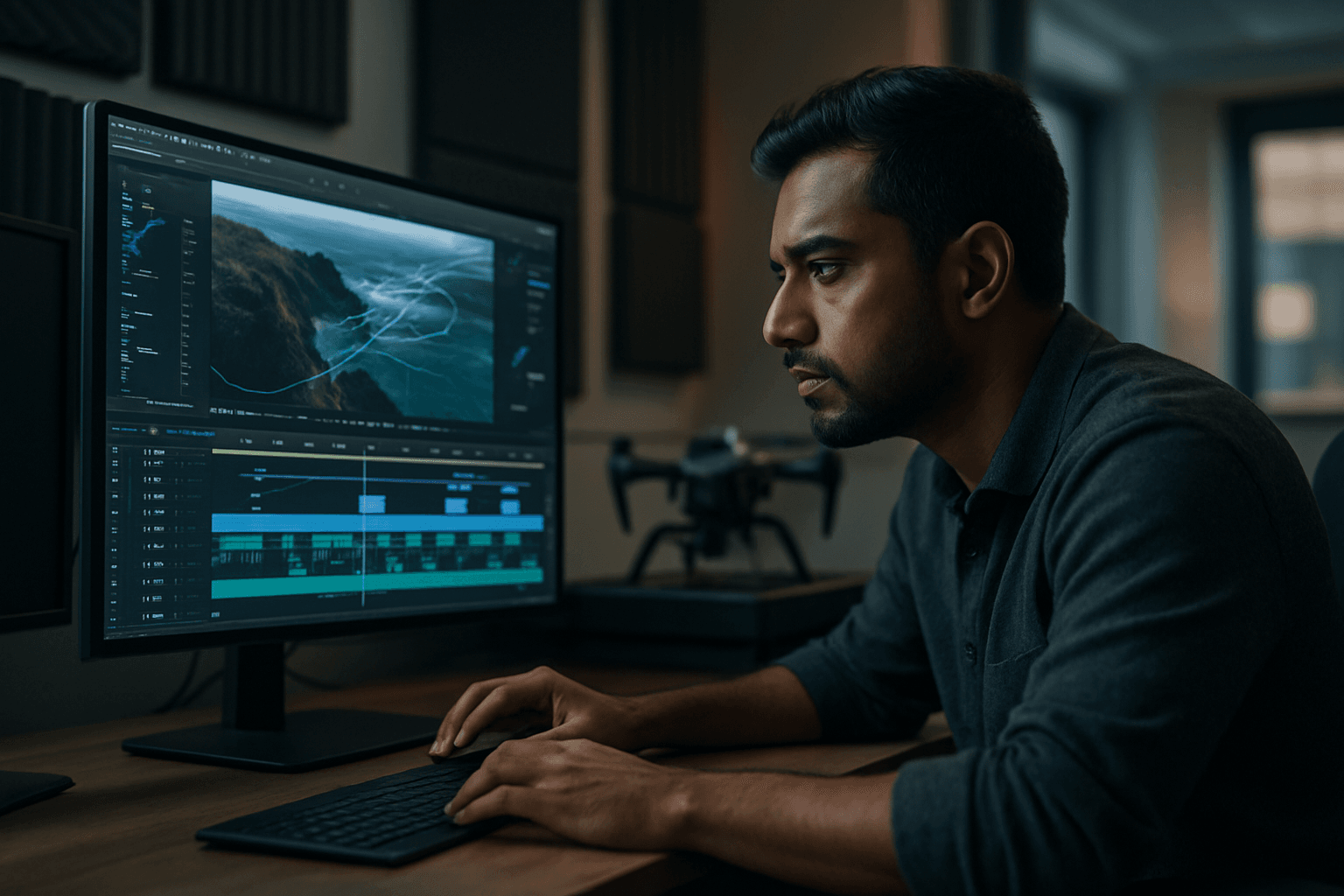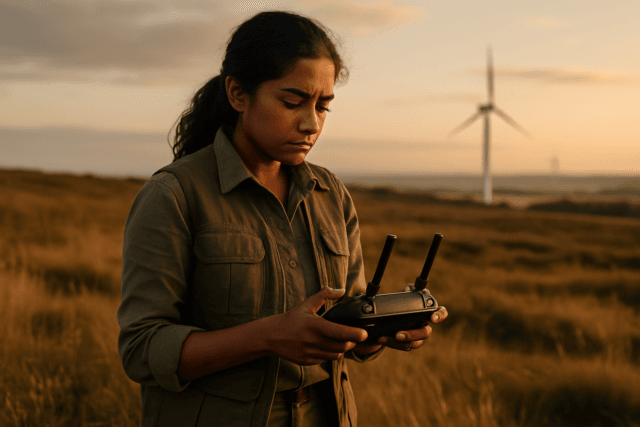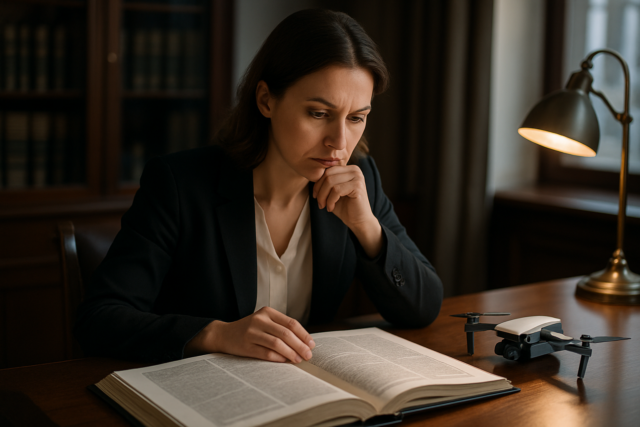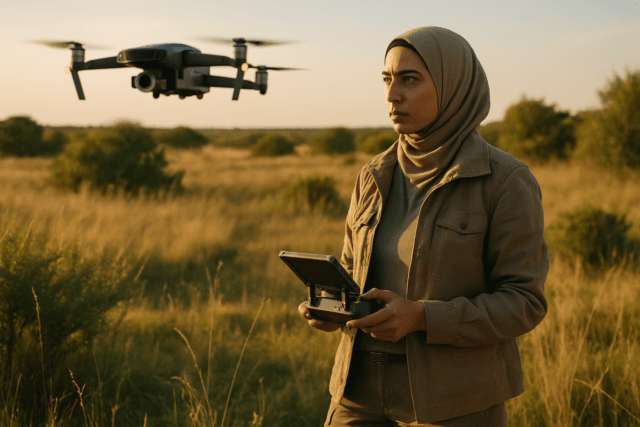Drone footage has revolutionized videography, offering breathtaking perspectives previously unimaginable. But to truly make your aerials stand out and tell a compelling story, integrating dynamic motion graphics can be a game-changer. From subtle enhancements to elaborate visual effects, motion graphics transform raw drone video into polished, professional-grade content.
This guide will walk you through the essential steps and tools for weaving captivating motion graphics into your drone video projects, turning them from impressive shots into unforgettable visual experiences.
Understanding the Power of Drone Motion Graphics
Motion graphics, when applied to drone footage, can serve multiple purposes:
- Highlighting Key Information: Use text overlays or animated pointers to draw attention to specific landmarks, routes, or features.
- Enhancing Storytelling: Visual elements can guide the viewer’s eye, provide context, or emphasize narrative points, making complex data digestible or abstract concepts tangible.
- Adding Production Value: Professional motion graphics lend a polished, cinematic feel to your videos, increasing engagement and perceived quality.
- Visualizing Data: Displaying animated statistics, maps, or infographics directly within the aerial view can be incredibly impactful for presentations, real estate tours, or urban planning visualizations.
The integration of motion graphics can seamlessly blend real-world drone footage with 3D models and animated elements, creating a more engaging and realistic experience.
Essential Software for Drone Motion Graphics
To create compelling drone motion graphics, you’ll need robust video editing and motion graphics software. Here are some of the top contenders:
Adobe After Effects
Often considered the industry standard for motion graphics and visual effects, After Effects offers unparalleled control and a vast array of tools for animation, compositing, and visual effects. It’s particularly strong for tracking footage and adding elements that interact with the drone’s movement. Tutorials demonstrate how to create drone animations from scratch, add motion blur, and even integrate 3D-tracked fog.
DaVinci Resolve
A powerful and increasingly popular choice, DaVinci Resolve offers comprehensive tools for video editing, color correction, visual effects, and motion graphics, including a robust free version. It’s praised for its extensive tools for video editing, motion graphics, and audio processing, supporting most popular video formats. Many professionals recommend it for its color grading capabilities, which are crucial for polishing drone footage.
Adobe Premiere Pro
While primarily a video editing software, Premiere Pro integrates seamlessly with After Effects, making it a powerful duo for projects involving both editing and motion graphics. It offers features like motion graphics templates and direct publishing, supporting a wide range of formats including 8K. Premiere Pro is excellent for managing and assembling your drone footage before adding detailed motion graphics in After Effects.
Wondershare Filmora
For users seeking a more intuitive and beginner-friendly experience without sacrificing powerful features, Filmora offers a good balance. It includes graphic presets, motion tracking, and a wide catalog of graphic elements, making it easier to add text and animated overlays.
Other Notable Options
- Final Cut Pro: A professional-grade option for Mac users, known for its efficiency and integration with the Apple ecosystem.
- VSDC Free Video Editor: A lightweight option for Windows users with a wide toolset for special effects and basic editing.
- Blender: A free and open-source 3D creation suite that can be used for more complex 3D drone animations and effects.
Key Techniques for Integrating Motion Graphics with Drone Footage
Successfully blending motion graphics with drone footage requires specific techniques to ensure realism and visual cohesion.
Motion Tracking and Camera Tracking
This is arguably the most crucial technique. Motion tracking allows you to “stick” graphics, text, or other visual elements to specific points within your drone footage, ensuring they move and scale realistically with the camera’s movement.
- 2D Tracking: For simpler movements, like attaching text to a stationary building in a panning shot, 2D tracking can suffice. Software like After Effects offers built-in 2D trackers.
- 3D Camera Tracking: For more complex drone movements where the camera’s perspective changes significantly (e.g., orbiting, dollying), 3D camera tracking is essential. This creates a virtual 3D camera within your software that matches the movement of your drone, allowing you to place 3D objects and graphics accurately into the scene.
Rotoscoping and Masking
When you need to place graphics behind or in front of elements in your drone footage, rotoscoping (tracing an object frame by frame) and masking become vital. This creates a “cutout” of your drone footage elements, allowing your motion graphics to appear seamlessly integrated within the scene.
Color Grading and Stabilization
Before adding motion graphics, ensure your drone footage is well-stabilized and color-graded. Stabilization removes unwanted shakiness, while consistent color grading helps blend your original footage with any added graphical elements, ensuring a cohesive look. Many video editing software solutions offer excellent stabilization features.
Text Overlays and Animated Elements
Simple yet effective, animated text can highlight key information or add narrative. Consider animating text to fly in, fade up, or track with an object. Beyond text, elements like animated arrows, lines, or icons can significantly enhance clarity and visual interest. For example, animating lines that follow roads or boundaries can be highly effective.
Creating Depth with Parallax
When adding 3D elements or atmospheric effects like fog, ensure they are placed at varying depths within your tracked scene. This creates a parallax effect, where elements closer to the camera move faster than those further away, enhancing realism during camera movement.
Tips for Optimal Drone Footage for Motion Graphics
The quality of your raw drone footage directly impacts the effectiveness of your motion graphics.
- Shoot in High Resolution: 4K or even 8K footage provides more flexibility for cropping, stabilizing, and adding graphics without losing quality.
- Maintain Consistent Lighting: Stable lighting conditions throughout your drone shoot will make color grading and integrating graphics much easier.
- Smooth Camera Movements: While stabilization software helps, capturing smooth, deliberate drone movements from the start simplifies the tracking process in post-production. Simple, low-speed movements are often best for animation backgrounds.
- Consider a Green Screen: For advanced architectural visualizations, incorporating a green screen object into your drone shot can greatly simplify the process of overlaying 3D models.
- Vary Camera Angles: Capture diverse camera movements like orbits, pullbacks, and tracking shots to provide more options for dynamic motion graphics integration.
By combining well-shot drone footage with a strategic approach to motion graphics, you can produce video projects that are not only informative but also visually stunning and deeply engaging.





